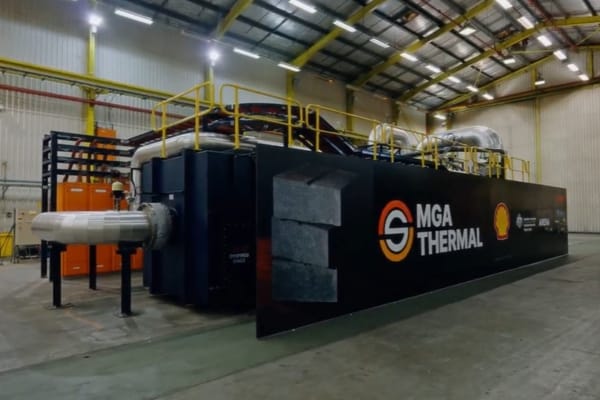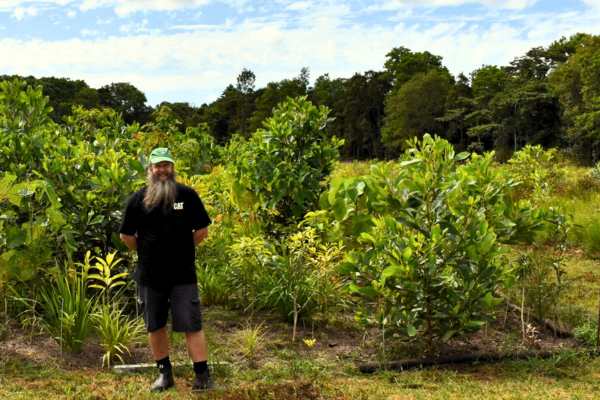Thermal energy goes live in NSW
MGA Thermal’s mission to decarbonise heavy industry is a step closer with its clean steam thermal energy demonstration plant now commissioned.

A demonstration-scale plant featuring world-first thermal tech designed to deliver clean steam has been unveiled in the Hunter region of NSW.
The facility, located in Tomago, is the first of its kind globally and is now fully operational. It uses renewable energy to generate reliable, industrial-grade steam, offering a clean alternative to fossil fuels like coal and natural gas.
The Tomago plant can store 5 MWh of energy and output 500 kW of thermal power continuously for a full day, equivalent to powering over 270 homes with steam energy.
The system is built around MGA Thermal’s technology, which was developed over more than a decade of research at the University of Newcastle.
At the core of the plant are specially engineered alloy blocks, known as Miscibility Gap Alloys (MGAs), which store energy through a process known as phase change.
These shoebox-sized blocks are heated using renewable electricity, melting the metal particles inside and storing energy as they change from solid to liquid. The energy is later released when the blocks cool and solidify again.
“The successful operation of this world-first system is a game-changer, proving that consistent, industrial-grade clean steam is not a future aspiration, but a reality today.”
When held in insulated tanks, the blocks can store large amounts of energy. This makes them suitable for a wide range of applications, from retrofitting coal-fired power stations to producing green steam for industrial processes.
Steam is critical to heavy industry and according to MGA Thermal accounts for 44% of energy use in Australia’s manufacturing sector. Unlike many other thermal technologies, MGA’s system can charge and discharge simultaneously, a game-changing feature for industries that need round-the-clock heat.
For this reason, MGA Thermal is targeting heavy industries like mineral processing, chemicals, building materials, and food & beverage processing, according to its CEO Mark Croudace.
“These sectors consume huge amounts of thermal energy – around 25% of carbon emissions come from burning fossil fuels, usually in the form of natural gas for industrial heat – so the decarbonisation opportunity is incredible," Croudace told TZP.
“The challenge is that these industries need a constant, reliable supply of heat at specific temperatures and pressures – something that’s difficult to achieve with renewables alone due to their intermittent nature.
“Our technology bridges that gap by storing renewable energy when it’s abundant and dispatching heat on demand, providing the consistency required by these processes but without the carbon footprint.”
Building blocks
The demonstration plant includes approximately 3,700 alloy blocks and can store five megawatt-hours of energy. It can generate 500 kilowatts of continuous thermal power for 24 hours – enough steam to power more than 270 homes for a full day.
The key differentiator of this type of system, according to its creator, is that it can be retrofitted into existing industrial plants with minimal disruption, making the transition to clean energy far less daunting.
“The successful operation of this world-first system is a game-changer, proving that consistent, industrial-grade clean steam is not a future aspiration, but a reality today,” MGA Thermal co-founder and chief scientist Erich Kisi said.
Lessons learned
The path to operation, however, wasn’t without hurdles. The company initially planned to go live in October 2023, but a heat build-up, which was quickly contained, delayed the launch of the demonstration unit while the design was reassessed.
The company undertook a thorough review and enhanced its manufacturing system and controls, employed an experienced head of engineering, and implemented an engineering management of change process as well as extensive safety safeguards, according to Croudace.
“The incident gave us valuable insight into how to better scale up our block manufacturing plant and system design. Challenges like this are an important part of developing novel technology, especially one that is the first-of-its-kind in its category," he said.
“The lessons we took from the incident have helped strengthen our Thermal Energy Storage system, and the successful launch of our demonstration unit is a strong reflection of that progress.”
The project is backed by CSIRO’s Main Sequence Ventures and the Australian Renewable Energy Agency (ARENA). MGA Thermal is now seeking fresh capital to scale up production and it is also planning a commercial pilot.
MGA Thermal’s system tackles a key challenge in clean energy: storing renewable energy and delivering it as heat on demand. Its secret lies in phase change. Each alloy block absorbs energy as it melts, and releases that energy as heat when it solidifies again. This process, called latent heat storage, makes the system compact, efficient, and reliable compared to traditional thermal methods. The blocks are stored in insulated tanks and can be charged with renewable energy while simultaneously discharging heat. This enables the delivery of clean, industrial steam 24/7 even when the sun isn’t shining, or the wind isn’t blowing.





